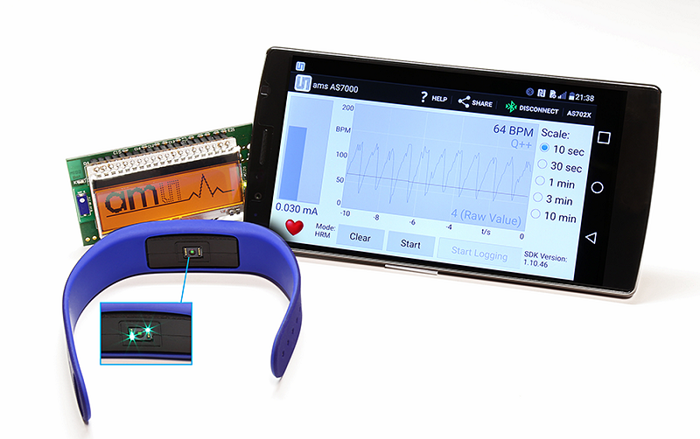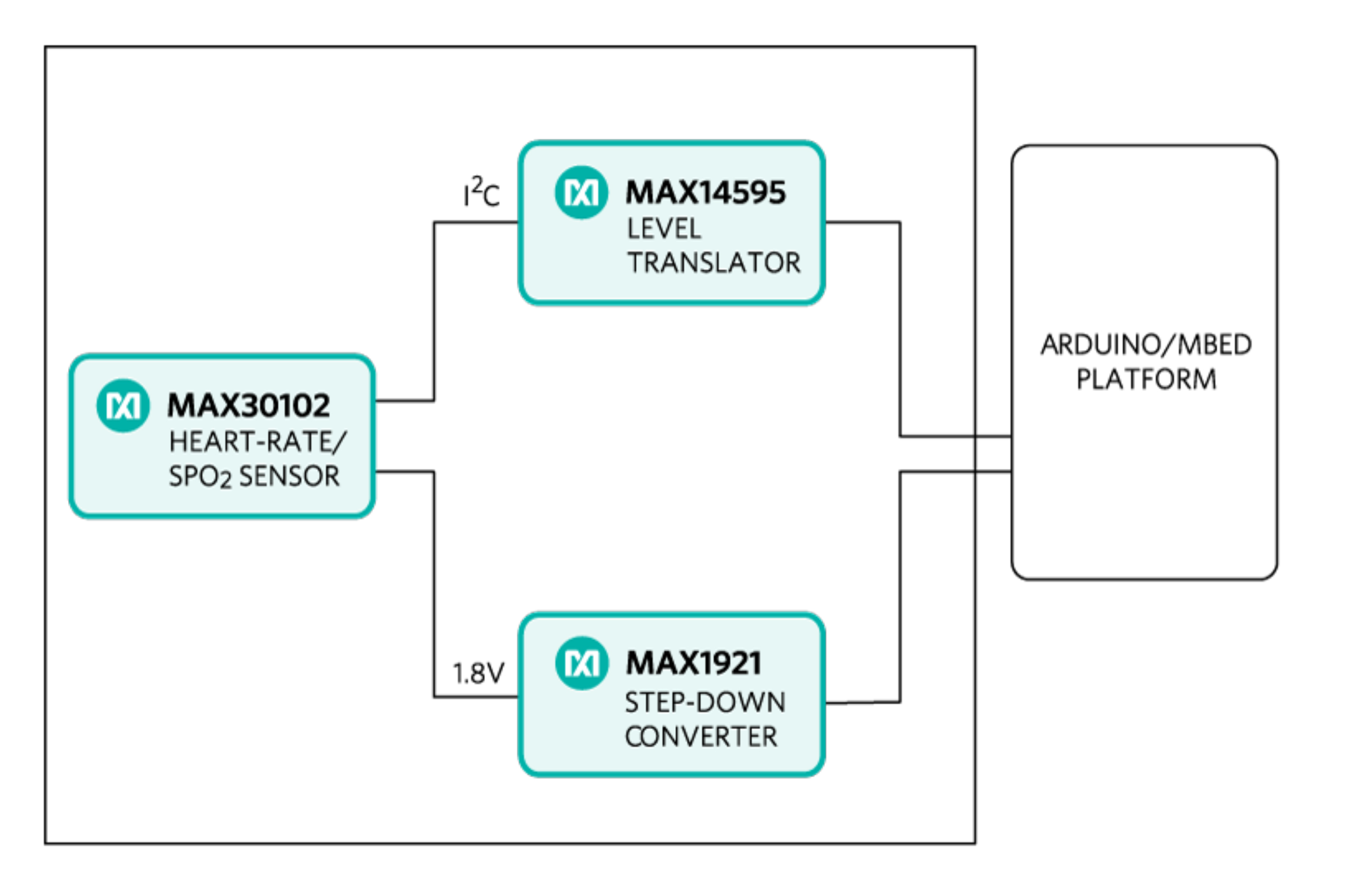By Majeed Ahmad, contributing writer
The synergy between wearable technology and medical devices is clear and present, as demonstrated by the Apple Watch Series 4, which came with Food and Drug Administration (FDA) clearance for various cardiac monitoring capabilities. A similar story is taking shape in hearable designs equipped with augmented reality (AR) and virtual reality (VR) capabilities.
In this application, tiny sensors, along with wired or wireless communication, identify abnormal and unexpected situations by recording psychological factors and other indications. However, the highly miniaturized medical wearable devices call for a significant enhancement in sensing capabilities because health care and fitness monitors mandate greater accuracy in measuring human biometrics, such as body temperature and heart rate.
A wearable medical sensor, worn by individuals to record health and fitness information, can monitor body signals, such as blood pressure, heartbeat, and other metabolic activities. These wearable sensors provide vital information about biological and psychological changes in the body, while monitoring the ongoing treatment for cardiovascular, neurological, and pulmonary disorders — for example, asthma, hypertension, etc.

Fig. 1: Medical-grade sensors are crucial in wearable designs for their role in creating advanced monitoring systems. (Image: ams)
This article outlines three major design considerations for wearable health-care device developers as they select and integrate tiny sensors into their portable designs. The process starts with the sensitivity and accuracy of sensor devices.
Accuracy of sensor measurements
While accuracy is a prime consideration for sensors at large, it presents a particular design challenge because wearable devices are small and worn on the body. They can suffer from thermal self-heating and constant body touch, which impact accuracy in measuring vital signs, such as temperature, heart rate, and blood-oxygen saturation (SpO2 ).
The AS7026 optical sensor from ams (Fig.1 ) uses sophisticated algorithms to ensure the accuracy of heart rate, heart rate variability, electrocardiogram (ECG), and blood pressure measurements in fitness trackers and smartwatches.
Sensor IC manufacturers are making advances to meet these challenges. For example, Rohm Semiconductor’s BH1790GLC optical sensor for heart-rate monitoring — optimized for wearable devices such as sports bands and smartwatches — improves sensitivity by allowing pulse waves to be detected with high accuracy, even with low LED brightness.
Also, the MAX30208 digital temperature sensor from Maxim Integrated eliminates thermal self-heating while delivering ±0.1°C accuracy in the range of 30°C to 50°C. The clinical-grade temperature sensor cancels ambient light for greater accuracy and employs algorithms for motion compensation to increase measurement accuracy.
Wearable sensors’ power conundrum
The incorporation of heart-rate monitoring in smartwatches and sports bands has been a challenge due to limited battery capacity. In other words, optical sensors for heart-rate monitoring require a significant reduction in power consumption to extend operating time for wearable devices.
Take the example of Maxim Integrated’s MAXM86161 in-ear heart-rate monitor and pulse oximeter targeted at hearables and other wearable applications. The sensor comes integrated with an analog front-end (AFE), which eliminates the need for a separate chip and connecting it to the optical module. Maxim Integrated claims that the MAXM86161 sensor consumes approximately 35% less power than its nearest competitor with less than 10 μA in operating mode and 1.6 μA in shutdown mode.
Here, it’s important to note that energy savings and miniaturization go hand in hand when it comes to sensors serving the medical wearables market. The MAXM86161 in-ear heart-rate monitor comes in an OLGA package measuring 2.9 x 4.3 x 1.4 mm and includes three LEDs: red and infrared for SpO2 measurement and green for heart rate.
Biopotential AFE chips that are smaller, lighter, and less obtrusive are available for cardiac monitoring devices to ensure that wearable devices are not unpleasant for patients to wear and offer longer battery life. The AD8233 chip from Analog Devices Inc. (ADI) has been designed as an ECG front end that brings power consumption down to microamps by featuring a typical quiescent current of 50 μA.
Sensor platforms for medical wearables
As with other portable designs, modular sensor platforms are offered to facilitate out-of-the-box solutions for medical wearables. For instance, the Aistin Blue development kit from iProtoXi comes with application samples for fitness and activity tracking. It incorporates the latest sensors from Kionix, now part of Rohm Semiconductor. The kit includes the Kionix Windows Sensor Evaluation software that simplifies sensor configuration and data acquisition.
Another example is the MAXREFDES101 Health Sensor Platform 2.0 from Maxim Integrated (Fig. 2 ) that facilitates rapid prototyping, evaluation, and development for accurate monitoring of body temperature, heart rate, and ECG. It comprises a watch enclosure that houses a display, battery, micro board, and sensor board.

Fig. 2: The sensor-packed platform for wrist-worn devices facilitates measurements for ECG, heart rate, and temperature. (Image: Maxim Integrated)
The sensor board includes an optical sensor, an integrated biopotential and bioimpedance AFE, a temperature sensor, and a biometric sensor hub. Here, the MAX32664 biometric sensor hub simplifies the development process by providing embedded firmware and algorithms as well as enabling seamless communication with the optical sensors.
The Health Sensor Platform 2.0 supports wearable designs ranging from sports watches, to ECG monitors, to fitness trackers. It also allows developers to conduct their own analyses and evaluation of onboard algorithms.
The role of sensor algorithms
Biosensors inside smartwatches, fitness trackers, and other medical wearables must be highly accurate in monitoring various health parameters. One of the most common types of biosensors, an optical sensor, is a case in point. It interacts with coherent and non-coherent light sources, which can be absorbed, reflected, and scattered or dispersed, altering the sensor signal accuracy.
So, optical sensors come integrated with vital-sign monitoring algorithms, ensuring that ambient light cancellation and other motion cancellation challenges are addressed adequately. Second, as mentioned above, medical sensors should offer highly small form factors so they can fit well into tiny wearables and consume minimal power.
Finally, the availability of reference designs and development kits can save months of development work for wearable design engineers, while delivering advanced tools for the simple integration of new sensors. It’s all happening now with the adoption of advanced monitoring systems in wearable sensors.
Advertisement
Learn more about Electronic Products MagazineMaxim Integrated








